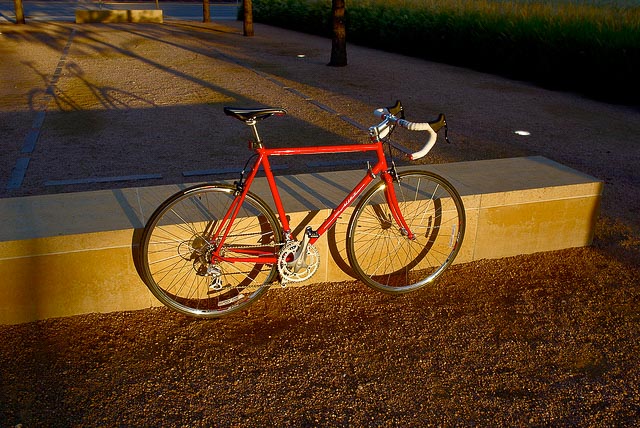The Houston City Council today is set to vote on the latest version of the Houston Bike Plan. With council approval, the plan, an effort that has been in progress for almost two years, is set to transform the way the city of Houston thinks about the place of people who bicycle on our streets.
(Update: 11:14 a.m. -- Approval of the plan, once again, has been delayed.)
The plan represents a big change to Houston’s transportation culture. It offers up a comprehensive master plan and careful step-by-step public engagement process for incorporating bicycles into our transportation system. This effort is critical simply because Houston has not updated its bike plan since 1993 and our city and the ways we move through it have changed a great deal in that time.
The plan brings bicycles into Houston’s municipal code in a meaningful way for the first time ever. It recommends the creation of biannual report on the progress toward plan implementation and requires biannual review to determine if updates are needed. It tasks several city departments with clear responsibilities in pursuing the plan. It pushes the city to find funding streams for implementation either through the existing budget and through the leveraging of grants and partnerships with both public and private bodies. It creates a standing body, the Bicycle Advisory Committee, that will be appointed by the Mayor and approved by city council. This body will be tasked with facilitating the implementation of the master plan and working with community partner’s to mesh neighborhoods needs with the overall effort. They will also help the city develop the recommended annual report, think about the best ways to maintain bikeways, and promote the system as it grows.
As a result of conversations with community groups in December and January the plan and governing ordinance have been updated to ensure that public and community engagement will be a foundational part of the plan’s implementation and that safety and transportation are central to the bike plan.
The newest iteration makes it clear that the plan is not regulatory, but rather a master plan that includes a carefully crafted set of recommendations. The routes and implementation proposals laid out were developed through public engagement and planning, but they remain recommendations. Rather than each of the lines on the plan’s map being set in stone, residents and officials should see the routes as corridors within which a facility might be built. The revised version calls for engagement with neighborhoods at the earliest stage of design or engineering so the community can play a central role in shaping the bicycle facility they want to see.
As council considers the plan, the challenge remains balancing planning and careful engagement with action. The current plan does that well.
The plan, at its most fundamental, revolves around the goal of making our streets safer for all users. The effort’s recommendations would result in a transportation system that would benefit not just bicyclists, but pedestrians and drivers as well. Creating better defined systems for all users and planning streets that acknowledge a diversity of users is the best way for us to achieve the goal of safer streets.
The new plan offers all residents an ongoing voice in the conversation about how we work toward that goal and how it might change our communities. If the city council signals its support for this effort on Wednesday, the officials, advocates, and residents who have worked diligently on improving the plan since 2015, can work with all Houston residents to move toward action and we can all begin the work of building a safer city.


